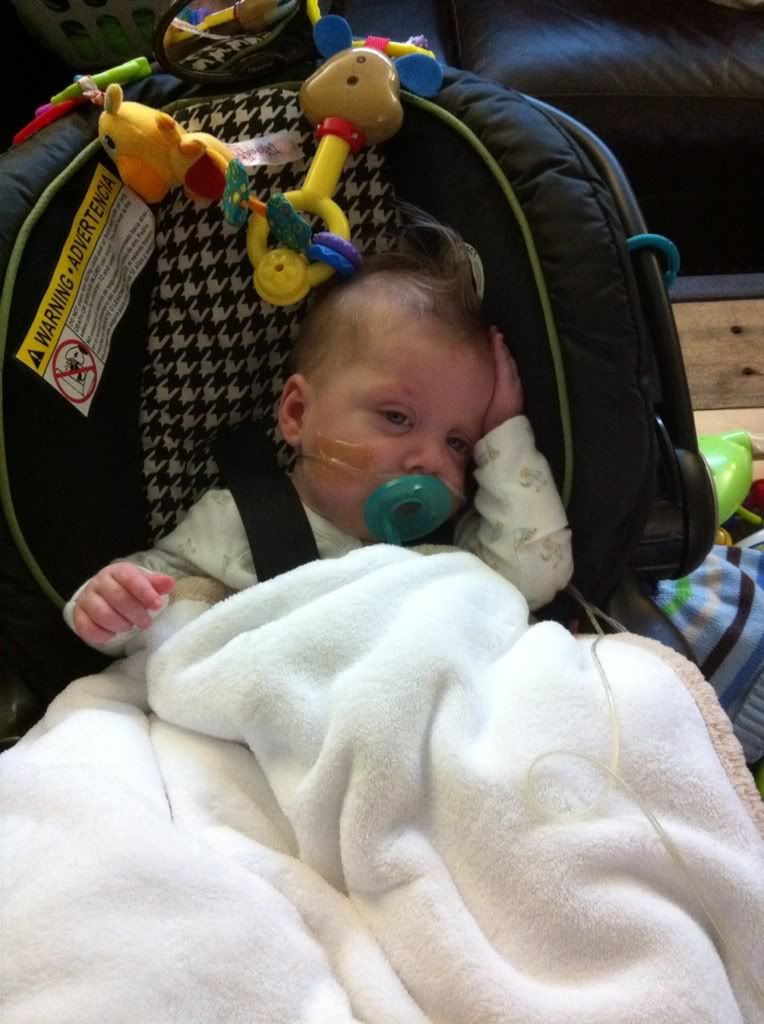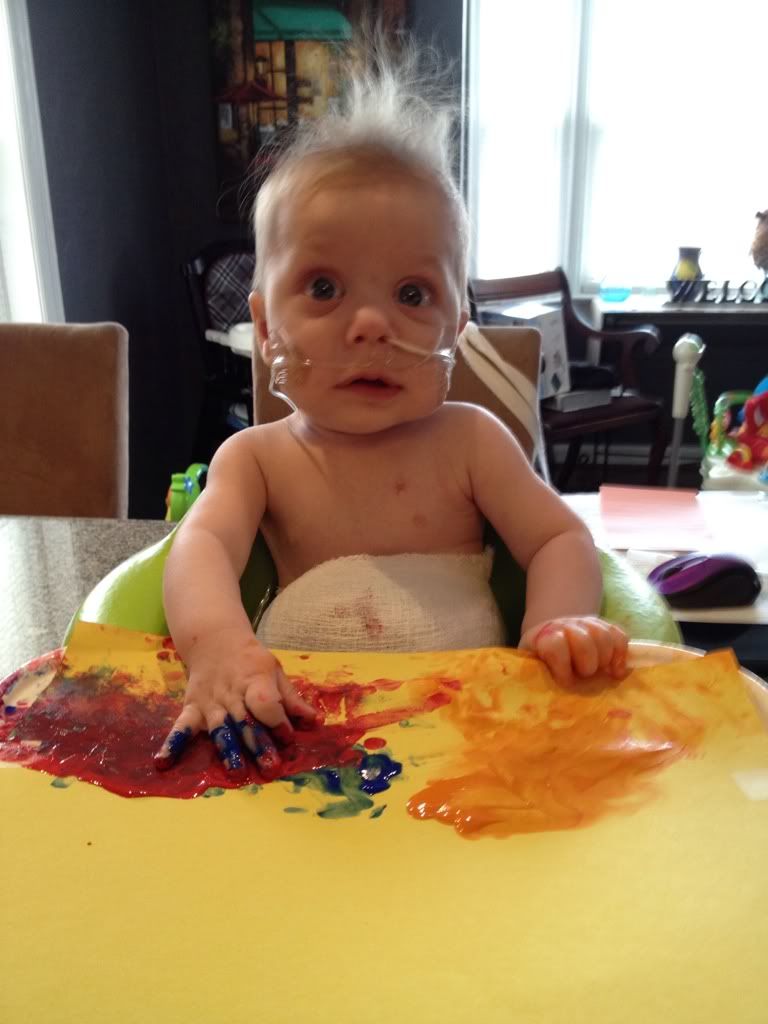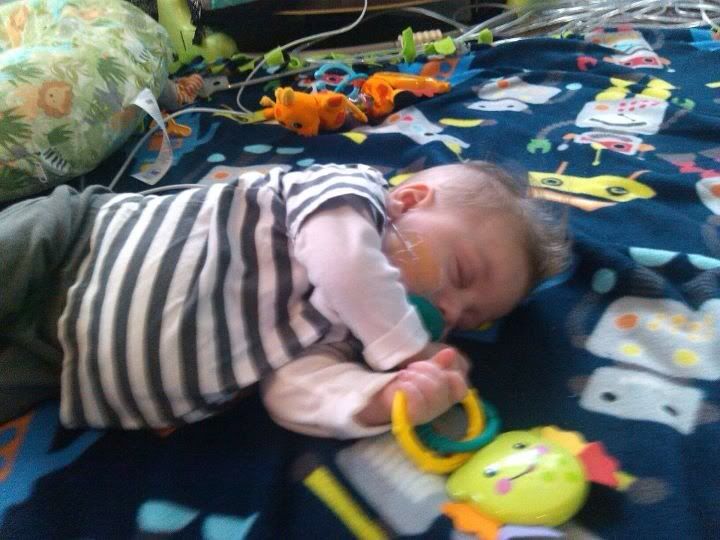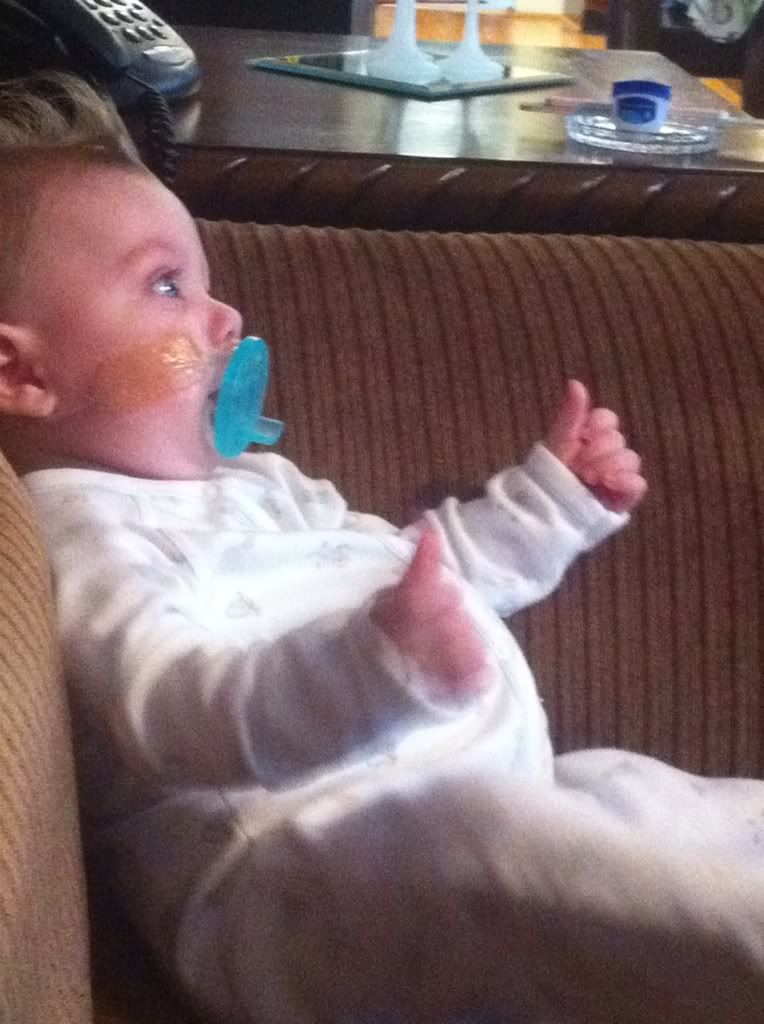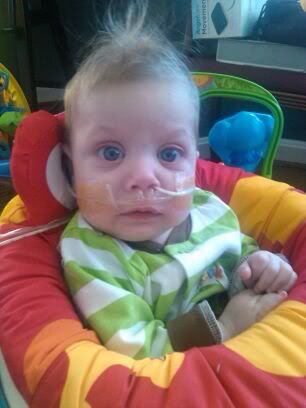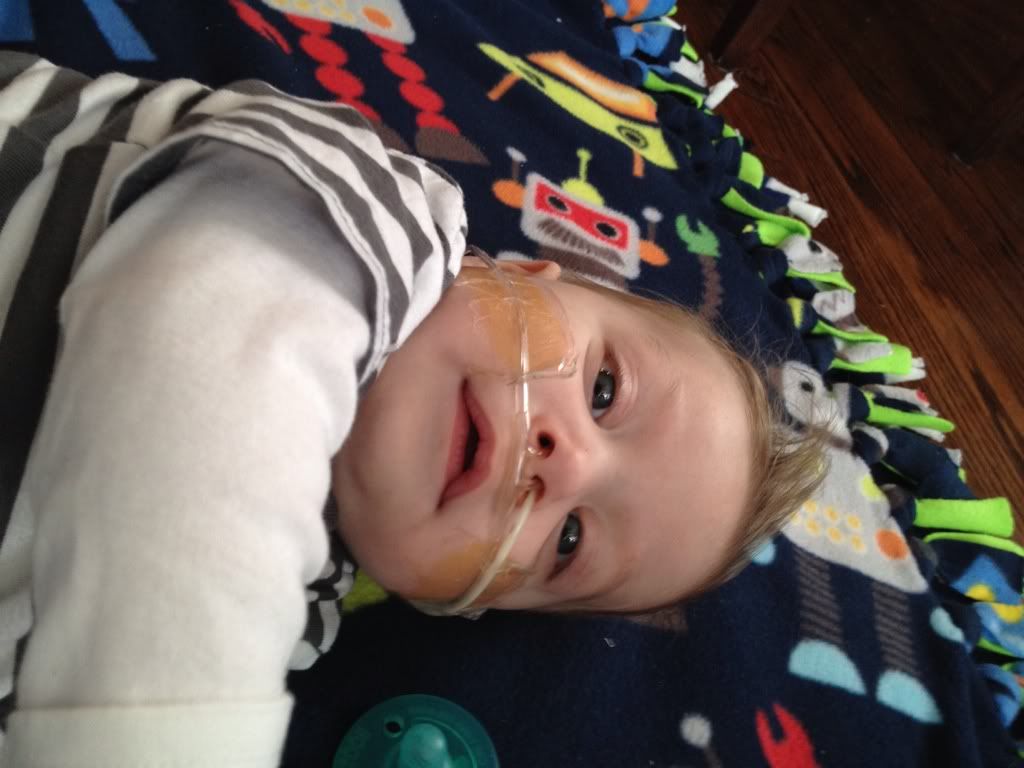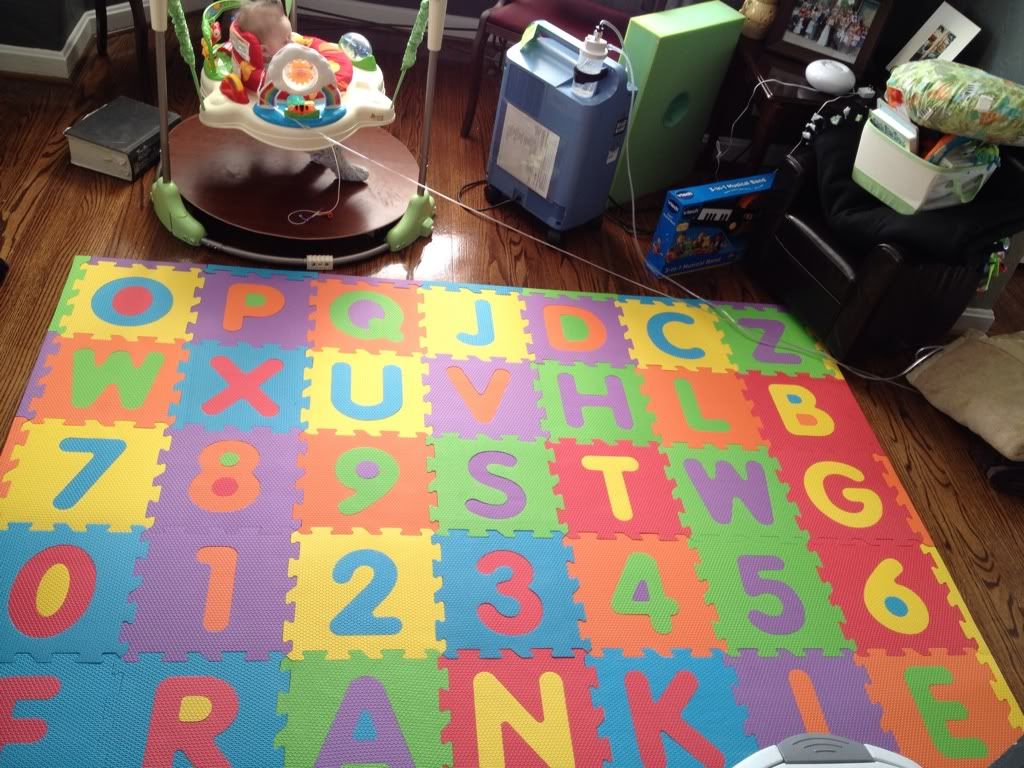As we all know, Frankie has an ASD (atrial septal defect). We got the official diagnosis for this literally the day before we left the NICU the first time. Why? They were waiting to see if it was possibly a PFO. An ASD can be in several different spots, a PFO is in one cartain spot. His ASD happens to be where the PFO would be. In utero, we all have a PFO. Once we are born, it closes. Sometimes it takes longer in some babies than in others for it to close. We were all hoping that it was a PFO that was slow to close but unfortunately, it's an ASD.
What do you do with an ASD?
Typically, they close the ASD around age 3-5 depending on how large it is and if it is causing the child any problems. Since Frankie's is so large, they want to close it around the age of 1.
Problems it's causing?
In a healthy heart, blood that returns from the body to the right-sided filling chamber (right atrium) is low in oxygen. This blood passes to the right-sided pumping chamber (right ventricle), and then to the lungs to receive oxygen. The blood that has been enriched with oxygen returns to the left atrium, and then to the left ventricle. It's then pumped out to the body through the aorta, a large blood vessel that carries the blood to the smaller blood vessels in the body. The right and left filling chambers are separated by a thin shared wall, called the atrial septum.
In a person with an atrial septal defect, there's an opening in the wall (septum) between the atria. As a result, some oxygenated blood from the left atrium flows through the hole in the septum into the right atrium, where it mixes with oxygen-poor blood and increases the total amount of blood that flows toward the lungs. The increased blood flow to the lungs creates a swishing sound, which is known as a heart murmur. This is making the right side of his heart dilated because there is too much blood in there. His heart is working twice as hard and he is burning way more calories because of it. This also causes him to breath quicker and have a higher heart rate.
How do we fix it?
There are several different options.
1. Cardiac catheterization: A thin, flexible tube (a catheter) is inserted into a blood vessel in the leg that leads to the heart. A cardiologist guides the tube into the heart to make measurements of blood flow, pressure, and oxygen levels in the heart chambers. A special implant is positioned into the hole and is designed to flatten against the septum on both sides to close and permanently seal the ASD.
Why this won't work for Frankie: He is too small. Unless he somehow has this massive growth spert, this won't work. His vessels are too small and it would just tear them up and cause more problems. The doctor said he would need to be at least 25 pounds. Right now, he is 12lbs 9oz. That's a lot of weight to gain. Anything is possible but it isn't likely.
2. Going through the liver: Similar to the cardiac cath, they can go through the liver and to the heart to close it up.
Why this won't work for Frankie: One word... Omphalocele.
3. Open heart surgery: ASD surgery involves making a cut in the chest so a surgeon can stitch the hole in the atrial septum closed or sew a patch of manmade surgical material (such as Gore-Tex) over the defect. Eventually, the tissue of the heart heals over the patch or stitches, making the area smooth and nearly normal in appearance.
There is a "patch" that they would like to try on Frankie. There is a 50% chance that they can do it this way. The reason they want to try and use the patch is so that they don't have to put him on a heart and lunch machine. With the patch, the heart can be beating while they patch it. His ASD is very large so they will try this first and if it doesn't work, they will surgically close it since they already are in there and have the chest opened up. Unfortunately, this means he will have to be on a heart and lung machine while they do the surgery because they have to stop the heart from beating and drain it. Then they will sew it shut and get things going again.
This is the most likely case for us as of now. It is absolutely terrifying to think of and makes me sick to my stomach. That's why I haven't written this post yet. He needs this and he will be okay. This is a routine procedure for these doctors, they do them ALL the time and statically speaking, the likely hood of anything going wrong is the same as us going in for his hernia surgery. Does that make me feel better? Hell no. The thought of his little heart not beating scares the living shit out of me. I hate every second of it. I'm praying to the good, good Lord that we don't have to do it this way but it's not looking good. His ASD is just too large and it won't close on it's own.
When will the surgery be?
Around 1 year of age. We go back to the cardiologist in June to take a look at things again. We should have a better idea then and I'm sure we will be seen a few more times before surgery to plan everything out. We need to do this surgery before we can to any O surgeries so that he has a healthy heart.
How will he be once recovered?
Having an ASD can make you very tired (not in his case), poor growth, not want to eat much, shortness of breath and lung problems. Once he all all healed he shouldn't breath as fast, his heart rate should be more normal and he should eat better (hoping, hoping, hoping for this). Also, it will help out his PPHN. Since it's not the cause of his PPHN it will not correct it but it will certainly help.
How is the PPHN?
His lung pressures are still high but it is getting better. We still have the option to try steroids again. As for now, we are just leaving things the way they are since he is doing great, clinically. Instead of get Sildenafil(Viagra) 4 times a day, he is now getting it 3 times a day. Lessening meds is always a plus! When do children typically out grow PPHN? Between 5-6 years old. Why so long? This is when their lung tissue finally stops growing.
I do think that is it for now. If anyone has any questions, feel free to ask. I may have missed something as this is a long, very informative post with too much info! Hopefully I remembered everything. Overall, he's doing well. He's such a happy, sweet, good, good baby! Love to you all!!!

